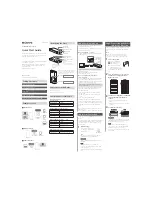
Micron Electronics, Inc.
C-1
Appendix C: Glossary
Glossary
Application
:
A software program that operates under an operating system to perform
a specific task.
BIOS
:
Basic Input/Output System. Programs that are permanently stored ithe
system board’s ROM chips providing functions such as the power-on self
test. Also see ROM.
Boot
:
To start the computer system and load the operating system.
Bus
:
The set of address or data lines used to transfer information between different
components within a computer (such as memory, the microprocessor, and
the expansion slots).
Cache
:
Provides fast, local storage for frequently accessed instructions and data to
provide the processor with the fastest stream of information possible, while
keeping main memory current.
Clock
:
A circuit that sends a consistent, periodic signal used to synchronize the
computer and to step information through the system.
Closed
:
A circuit that is complete. Usually accomplished by placing a jumper over
two pins on the system board or a peripheral card. Also see “Open” and
“Jumper.”
CMOS
:
Complementary Metal Oxide Semiconductor. A logic circuit family that uses
very little power. Sometimes used to store information by applying constant,
uninterrupted power through the use of an external battery.
Co-processor
: A microprocessor device that performs specialized computations (such
as floating-point arithmetic) much more efficiently than the microprocessor
alone.
CPU
:
Central Processing Unit. The integrated circuit chip that performs the actual
computing functions of the computer. Other chips perform support functions
like storing data and controlling peripherals. Also see microprocessor.
Disk
:
See “Floppy Disk” and “Hard Disk.”
DMA
:
Direct Memory Access. A method for transferring data directly to and from
system memory, bypassing the microprocessor.
DOS
:
See “Operating System.”





































